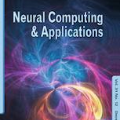Neural Cellular Automata (NCA) have shown a remarkable ability to learn the required rules to "grow" images, classify morphologies, segment images, as well as to do general computation such as path-finding. We believe the inductive prior they introduce lends itself to the generation of textures. Textures in the natural world are often generated by variants of locally interacting reaction-diffusion systems. Human-made textures are likewise often generated in a local manner (textile weaving, for instance) or using rules with local dependencies (regular grids or geometric patterns). We demonstrate learning a texture generator from a single template image, with the generation method being embarrassingly parallel, exhibiting quick convergence and high fidelity of output, and requiring only some minimal assumptions around the underlying state manifold. Furthermore, we investigate properties of the learned models that are both useful and interesting, such as non-stationary dynamics and an inherent robustness to damage. Finally, we make qualitative claims that the behaviour exhibited by the NCA model is a learned, distributed, local algorithm to generate a texture, setting our method apart from existing work on texture generation. We discuss the advantages of such a paradigm.
翻译:自然界的质地往往由本地相互作用的反应扩散系统变异产生。 人造质地也常常以本地方式(如纺织编织)或使用本地依赖(常规网格或几何形态)的规则(常规网格或几何形态)生成。 我们展示了从单一模板图像中学习质地生成器的特质,其生成方法与生成方法平行,呈现出快速的趋同和高度的忠诚性,并只需要对基本状态的外形进行一些最起码的假设。 此外,我们调查学习的模型的特性,这些特性既有用又有趣,例如非静止的动态和固有的损害坚固性。 最后,我们从质量上说,国家航空航天局模型所展示的行为是一种学习的、分布的、本地的算法,可以产生一种纹理的模型。我们讨论的是,我们的方法与现有的文本生成方法不同。




